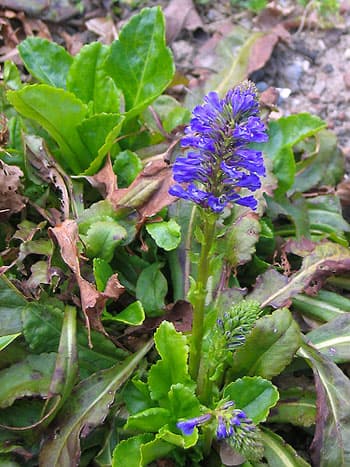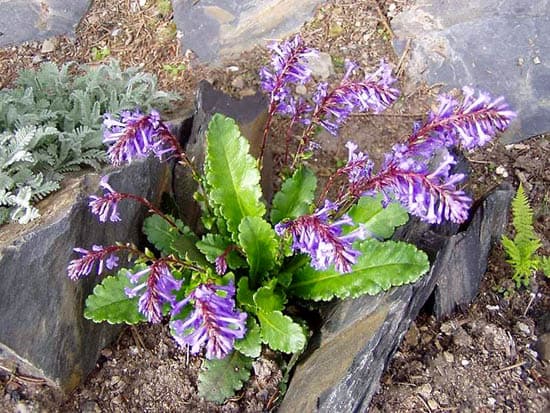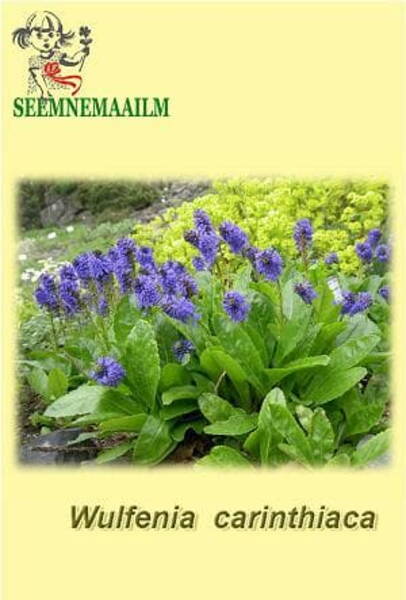Homeland - the mountains of Central Europe. Grows in the Alps and the Balkans in alpine meadows at an altitude of 1500-2000 m.
Winter hardiness zones: Z5-10.
Perennial 20-30 cm high. Leaves are evergreen, oval, with pronounced venation, serrated, dark green, collected in basal rosettes.
Flowers 12-15 mm long, tubular-bell-shaped, dark purple-blue, collected in compact one-sided brushes.
Blooms in early June - July.
This species is undemanding to soil acidity. Requires planting in a sunny dry place of an alpine slide in well-drained sandy soil with a small humus content. Seeds are sown before winter, shoots appear in the light in spring within 1-3 months at a temperature of 16-18 degrees. Also propagated by division in early spring or autumn.
Suitable for container culture. Quite winter-hardy. Tested in St. Petersburg.

Location: in Estonia, it is better to choose a sunny place for planting for abundant flowering. During the growing season, it is demanding of soil moisture. For favorable wintering, it is necessary to provide good drainage. The soil should be sufficiently loose and fertile. In snowless winters, they can freeze, but they winter well under the snow. Protection from moisture is recommended, since the plants do not freeze so much as rot and sweat.
Reproduction: by seeds and vegetatively. For friendly germination of all species, cold stratification or sowing before winter is recommended. In favorable conditions, seedlings develop quite quickly. From seeds, they bloom in 2-3 years. The easiest way to propagate is by division. Can be propagated by rooting leaves cut with a piece of stem.
Use: very good for planting in rock crevices and on narrow terraces of small rock gardens. Can be grown in containers.

Eng.: Carinthian Wulfenia, Cows Footprint, Cows Footsteps. Suom.: Alppivulfenia.
Carinthian Wulfenia (Cows Footprint, Cows Footsteps)
Cows Footsteps - Wulfenia carinthiaca.











